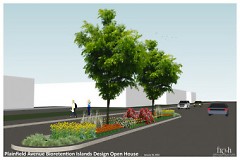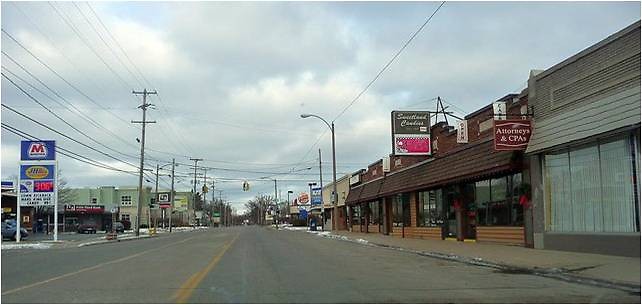Over the past few years, the Creston neighborhood has continually proved its commitment to the environment. Last spring, Creston neighbors helped plant two community gardens to bring healthy food and aesthetic beauty to the neighborhood. This spring, at the Crestion Neighborhood Association (CNA) annual pancake breakfast, neighbors celebrated the newest green technology coming to their neighborhood--bioretention islands.
As a part of a larger initiative to create a healthy business district in Grand Rapids' North Quarter, seven bioretention islands will be built in the center of Plainfield between Leonard Street and Ann Street. The islands will be planted with native plants and trees that bring an aesthetic appeal to Plainfield. Not only are bioretention islands beautiful, they are also an effective way to address stormwater pollution, the number one source of pollution in the Grand River and the Great Lakes. Specificially chosen and specially cultivated trees and plants help filter the pollutants from stormwater, preventing them from contaminating local water sources.
During the presention, Commissioner Ruth Kelly explains her commmitment to the project and thanks local businesses for proving an enthusiastic source of funding. She urges neighbors to shop local and support businesses that are committed to the community. Breese Stam, from the City of Grand Rapids' Engineering Department, congratulates Creston on finding an alternative source of funding. "[The City of Grand Rapids does] not have enough resources to maintain what we have, let alone to build something new and maintain it. So when we came forward to do this project, it was going to have to be your community that made it happen," Stam reminds the neighbors. Joe Platte, representative of Fishbeck, Thompson, Carr, and Huber, Inc describes how the bioretention islands will act as a stormwater filtration system for the neighborhood. Watch the video to join in the Creston neighborhood's excitement about this innovative project!
The Rapidian, a program of the 501(c)3 nonprofit Community Media Center, relies on the community’s support to help cover the cost of training reporters and publishing content.
We need your help.
If each of our readers and content creators who values this community platform help support its creation and maintenance, The Rapidian can continue to educate and facilitate a conversation around issues for years to come.
Please support The Rapidian and make a contribution today.


